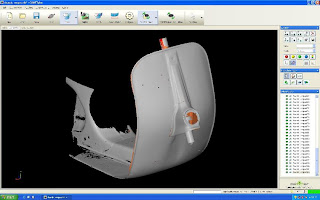Finally, the engine assembled.
Every parts were cleaned and, I must say, they were well preserved. Wear did not ocoured, which is good for a 1968 engine.
I bought this Vespa in 2002 and I trust the ancient owner when he said: "the Vespa doesn't look great, but the engine is working very well".
He was right, despite some kicks of the clutch, which I repaired with a brand new discs.
As seen, I changed the engine's support. The old one was made of aluminum and breaked when I was kicking the pedal to start the engine. I made this in pinewood, heavier but sturdy.
It was hard to put the engine working, tuning the carburetor is not easy, and there were some gasoline leaks. But in the end, I could solve the problems, with some new joints.
My right foot and ankle hurted for a few days because of the kickstarts.


























